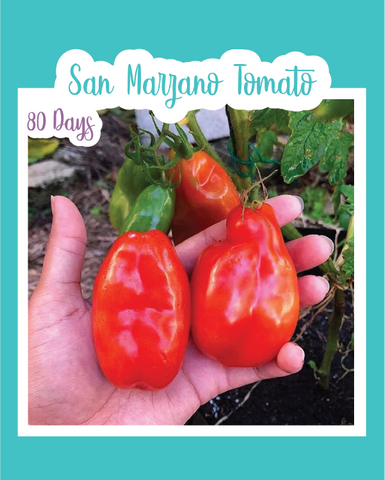Wapsipinicon Peach Tomato
**THIS ITEM IS SOLD OUT FOR THE SEASON**
Indeterminate
Seed Count: Approx. 15 seeds
Days to Maturity: 78 days from transplant
Description: Wapsipinicon Peach Tomato originated in 1890 by Elbert S. Carman, but then it was known as White Peach. This strain, however, came from Dennis Schlicht and is named after the Wapsipinicon River in northeast Iowa. This tomato is a heavy producer (thousands) of 2 inch round fuzzy yellow fruits. They have a wonderful, slightly-spicy, very fruity-sweet flavor, that is often said to be quite well-balanced. You can harvest these guys up until a frost. It is a novelty tomato that is so sweet, it begs for eating right off the vine. A two bite tomato with an unbelievably delicious nectar-like, juicy flavor. The Wapsipinicon Peach was also the winner of SSE’s 2006 Tomato Tasting. A rot resistant. regular-leaf wispy, tomato plant.
How To Grow
Sowing: Start tomatoes indoors 6-8 weeks before the last frost of spring, or direct sow in warmer climates. Sow seeds 1/4" deep and 1" apart. Tomatoes need 70-75 degrees F to germinate, as well as adequate light. Keep the soil moist, but make sure there is proper drainage, or the seeds can rot. When the second set of leaves emerge, transplant the seedlings into individual pots. Bury the stems up to the lowest set of leaves for strongly rooted plants.
Growing: Provide a trellis for this indeterminate tomato, providing extra supports where fruit set. Protect plants, if temperature drops below 55 degrees F, or damage will occur. Keep soil consistently moist, or cracking may also occur. Mulching can be beneficial to preserve moisture, and deter weeds. It is important to avoid wetting the leaves to reduce diseases. You can prune suckers to increase production, (I usually don't bother, due to laziness, but I'll give my plants big trims every month or two once the tomatoes are removed from that section). I surround my tomato plants with basil (it's a great Tomato horn worm deterrent) Other companions include, carrots, garlic, or onions. However, avoid planting them with cabbage, or corn.
Harvesting: Test the ripeness of tomatoes by pressing them gently; the flesh should yield slightly. The mature color also indicates ripeness. If the stem does not come easily off the vine, cut it with a scissors to avoid damaging the vines. Vine ripened tomatoes have the best flavor, but you can harvest them before they fully ripe if pests or weather become an issue. As soon as frost comes, all tomatoes should be harvested, even the green ones. Unripe tomatoes will ripen eventually, if kept in a warm place out of direct sunlight. Seed saving: Since cross pollination between most tomato varieties is unlikely, isolation is not a concern. Pick fully ripe tomatoes and separate the seeds from the pulp, and let completely dry. You can also ferment your seeds to remove the gel like substance on the seeds exterior. During fermentation, any bad seeds will float to the top, and all of the viable seeds stay sunk to the bottom. Fermenting your seeds can also increase germination rates as well. To ferment, squeeze the seeds, along with its gel, into a jar. Add some water, and let it sit at room temperature for a couple of days, you should see a film form on the top, and it should smell a bit sour. Once the film forms, skim it off the top, and rinse out your seeds. Place them on parchment paper to dry. Once dry, store your seeds for the next season.




